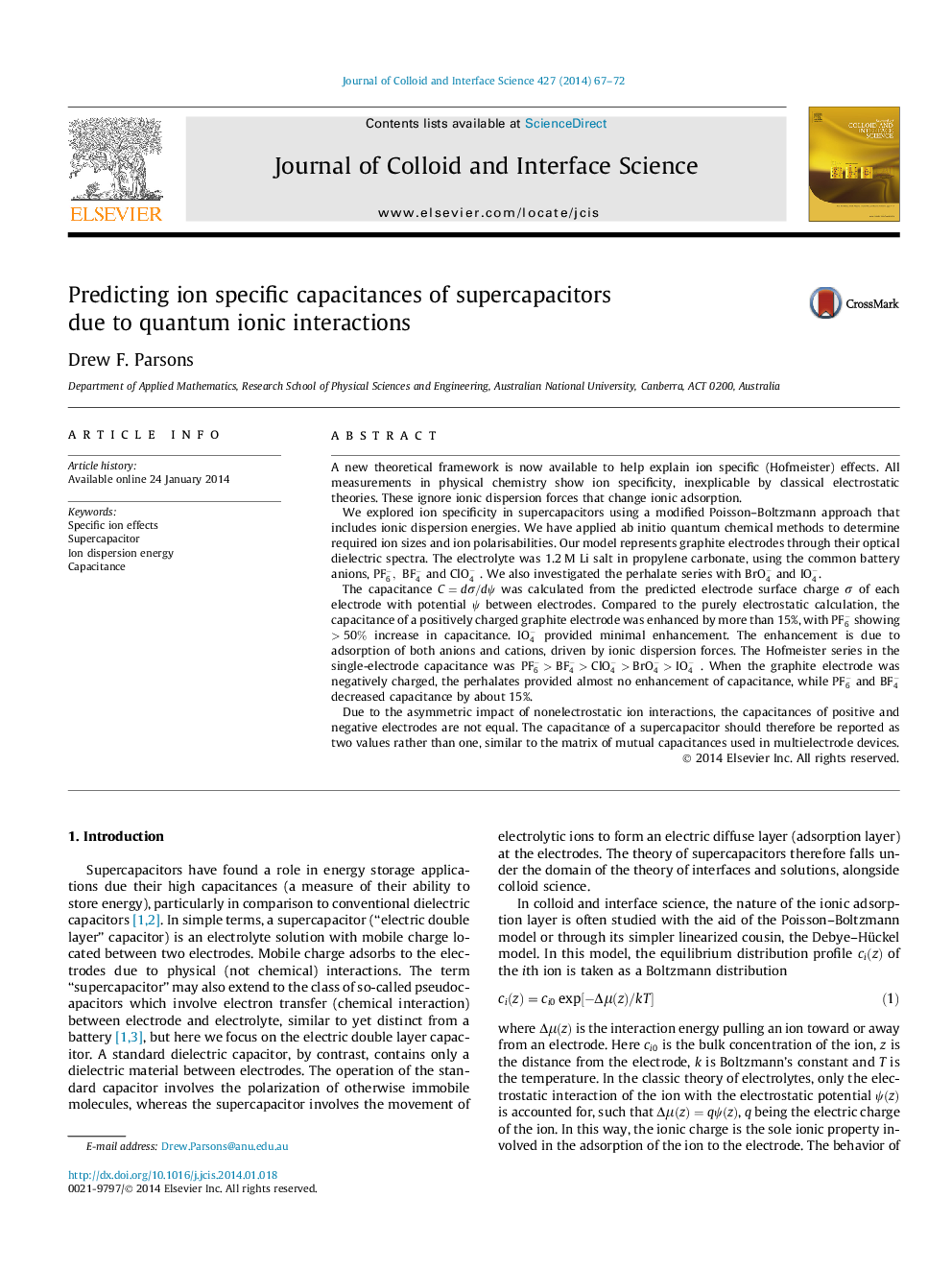| کد مقاله | کد نشریه | سال انتشار | مقاله انگلیسی | نسخه تمام متن |
|---|---|---|---|---|
| 607120 | 1454568 | 2014 | 6 صفحه PDF | دانلود رایگان |
• Ion adsorption to electrode surfaces depends on ion dispersion forces.
• Theoretical electrode capacitance becomes ion-specific.
• Capacitance of positive electrode increases by 15–50% over conventional theory.
• Positive and negative electrodes have different ion-specific capacitances.
A new theoretical framework is now available to help explain ion specific (Hofmeister) effects. All measurements in physical chemistry show ion specificity, inexplicable by classical electrostatic theories. These ignore ionic dispersion forces that change ionic adsorption.We explored ion specificity in supercapacitors using a modified Poisson–Boltzmann approach that includes ionic dispersion energies. We have applied ab initio quantum chemical methods to determine required ion sizes and ion polarisabilities. Our model represents graphite electrodes through their optical dielectric spectra. The electrolyte was 1.2 M Li salt in propylene carbonate, using the common battery anions, PF6-,BF4- and ClO4- . We also investigated the perhalate series with BrO4- and IO4-.The capacitance C=dσ/dψC=dσ/dψ was calculated from the predicted electrode surface charge σσ of each electrode with potential ψψ between electrodes. Compared to the purely electrostatic calculation, the capacitance of a positively charged graphite electrode was enhanced by more than 15%, with PF6- showing >50%>50% increase in capacitance. IO4- provided minimal enhancement. The enhancement is due to adsorption of both anions and cations, driven by ionic dispersion forces. The Hofmeister series in the single-electrode capacitance was PF6->BF4->ClO4->BrO4->IO4- . When the graphite electrode was negatively charged, the perhalates provided almost no enhancement of capacitance, while PF6- and BF4- decreased capacitance by about 15%.Due to the asymmetric impact of nonelectrostatic ion interactions, the capacitances of positive and negative electrodes are not equal. The capacitance of a supercapacitor should therefore be reported as two values rather than one, similar to the matrix of mutual capacitances used in multielectrode devices.
Figure optionsDownload high-quality image (65 K)Download as PowerPoint slide
Journal: Journal of Colloid and Interface Science - Volume 427, 1 August 2014, Pages 67–72
